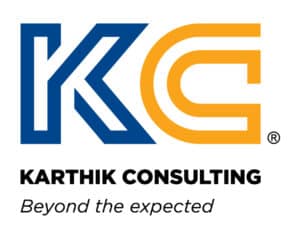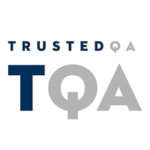Automation Tools for Testing
Automation Tools for Testing USA
QUART CONSULTING
A Guide to the Best Automation Tools for Testing
What is automation testing?
Automation testing basically means automatically managing the test data and then using the results to improve the quality of the software. If you want to run a successful development cycle, you need to execute running the same test repeatedly. Doing that manually can be extremely repetitive and time-consuming. If you have a test automation tool, it becomes so much easier to write the test suite, replay it according to your need, relieve human intervention, hence improving testing ROI. Automation testing is basically the process of testing software and other tech products. It is done to double check that the equipment is doing what it was designed to do. Automation testing helps you test for bugs or other issues that can arise with the development of a product. There is much more advantage to do it automatically, than with other types of testing like regression or functional testing. You can run automation testing at any time of the day as it uses scripted sequences to examine the software.
Why do you need automation?
There are some teams that do not have the time and resources to manually test a software. Automation is a great way to help with this. It helps to reduce the time taken to test products because of its efficiency. As a result of this, developers and production managers can divert their efforts to different aspects of the project, in turn boosting productivity. When you use automation technology, it means that testing can be done more frequently, which improves overall functionality. Software development cycles usually need to be tested repeatedly. Automation testing makes this job so much easier, and helps to deliver more accurate and reliable results than manual testing.

About Automation Consulting
With so many choices in Test Automation, finding a solution that stands apart from the rest can be challenging. QUART Consulting has created a solution that solves all your needs and guarantees that your framework will be up and running in just one week. eFAST is successfully implemented across many government and Fortune 500 applications nationwide. FAST has also been the key determining factor for winning contracts and making us a paragon of the test automation industry.
Benefits of automation testing
Automation testing has many benefits, some of which are listed below:
•Automation testing uses scripted sequences which are in-depth and can provide detailed reports, which wouldn’t be possible if done manually
• Automation testing helps in detecting bugs and other defects easily. It can easily analyse a much wider test coverage than humans
• Automation simplifies testing. When you use automation tools for testing , you can reuse the test scripts, manual testing, where a single code line is written for each test case
• Automation reduces the risk of human error as it can be run at any time of the day without the need of humans to oversee it
• Though automation may require an investment initially, it proves to be a cost-effective solution in the long run. The team members can use their time and effort in other areas, hence improving their workflow
Trusted by Fortune 500 companies











Which tests need to be automated?
You need to decide which tests benefit from automation and need to be automated.
• Tests that are repetitive and monotonous
• Tests that are high risk
• Tests that are extensive and require multiple data testing
• Tests that take a lot of time if done manually
Let Us Evaluate Your Current System
Types of automation testing
There are five types of automation testing. Different types of automation testing can be used in different circumstances depending on the application. It is up to you to analyse which kind of testing is the best for you. Given below are the main types of automation tools for testing.
Code analysis
It consists of testing tools comprising of dynamic analysis and static analysis. You can apply different testing tools to take care of separate tests. For instance, once the developer writes a code for usability or possible security flaws, there is no human interference throughout the testing process.
Unit tests
This type of testing is used to check individual components of the software. This means that each element is fully tested before the final version. With the use of automation testing, there is no need for developers to do these tests.
Integration tests
In integration tests, the application models are integrated and tested as a group, to figure out how well they work as a whole.
Automated accepted tests
These tests are usually written by the developers and are created before a new feature is developed. Automated tested tests can also be used as regression tests.
Smoke tests
These tests are used to check the stability of a product. If the product has an unstable build, it sent back to the developers.
Let Us Evaluate Your Current System
A few misconceptions about test automation
1. Automation testing will provide you with more free time
When a testi is done manually, the time is devoted to exploratory and functional testing to search for errors. The manual tester needs to go through the same steps over and over again. With automated testing, even though the time is cut drastically, the work of automated testers is spent in coding the tests and making improvements and adjustments if and when needed. The time spent on manual tasks is instead spent on the software you are developing.
2. The cost of automated testing is too high
Even though the initial cost of investment in automated testing might seem high, but over time, automated testing works out to be a comparatively cost effective solution. Multiple code revisions, if done manually can prove to be very costly and time consuming.
3. Automated testing is way better than manual testing
Both the approaches have their own pros and cons. There is no better or worse in this debate. Automated testing is very different from manual testing and is dependent on the software you are developing. If you are software is too large and too complex, you must rely on the automated approach rather than the manual approach.
Let Us Evaluate Your Current System
Automation test process
Given below is the rundown of the automation test process
Selecting the right test tool
You need to select the best test tool to suit your needs. For example, code analysis automation testing is used to detect a specific bug within the software. You ned to have a solid understanding of each tool and how it can be beneficial for you.
Determine the scope of automation
You need to determine the test area that needs to be automated and how big it is going to be. To determine the scope of automation testing, you need to consider factors like the complexity of the test, goals of testing, the resources and business components needed and technical feasibility.
Planning stage
This stage is made up of creating a testing strategy comprising of your automation tool of testing, your framework design and features. In this stage, you need to create a detailed timeline for scripting and to execute test cases with the development team.
Execution stage
When you have your test tool and strategy, you can run your test. You can generate a report and analyse with the rest of your team to provide a summary of the testing. This can be used later to compare.
Ongoing test maintenance
Ongoing maintenance is needed if you need to run your tests in the future with you reusable test scripts. When you repeatedly try and test a method, you are more likely to be provided with an accurate result.
Let Us Evaluate Your Current System
Testing Frameworks
A testing framework has a set of guidelines including coding standards, repository management, handling of test data, to get outcomes that are beneficial, for instance high portability, managing scripts in less time and easy reuse of code. Some of the used testing frameworks are:
Linear framework
In linear framework, you just need to write a simple code without the need of modularity or sequential steps.
Keyword driven framework
In the scripting technique, you associate keywords with certain actions and then use these keywords in your test scripts to perform a specific step.
Data driven framework
In this kind of framework, the test case data input is stored in a table or extension files. With this framework, you can perform negative as well as positive test cases.
Moduar framework
You can divide the test scripts into small independent modules in this kind of framework. These independent modules then interact with each other to run large test scripts.
Automation tools for testing:
It is important to identify the right tool for your project in order to have success in any test automation. Automated testing is done by testers during the development of a software. Automation tools are used as testing tools to create and run automated tests.
Choosing the right test automation framework:
To run some tools, you need to have special coding skills so as to create test scripts by writing code. Some tools on the other hand, do not require coding at all. Hybrid testing framework give testers the option to design customise tests using techniques that are a mix of both data driven and keyboard driven frameworks.

Let Us Evaluate Your Current System
What is a Smart Test Automation Framework?
It is a set of rules and guidelines that help define helpful test cases. Smart test automation framework helps to cater to the need of businesses for efficient approaches to testing.
Some people have the option to choose their testing tools on the basis of their software development platform. With the advancement in technology and a plethora of automation tools available, you can pick and choose the test automation tools for your business. However, knowing which automation testing tool is best for your business could be a bit challenging if you are not aware of the pros and cons of each of them. You need to make sure that the testing tool fits in with the development workflow of your team. Let us have a look at the top automation testing tool lists of the top automation frameworks available for GUI testing.
1.eFast
eFast is one of the best automation tools for testing available in the market today. This tool helps you save time building a framework from scratch and give you a deep analysis of your test execution results. eFast helps you create a dashboard report that can easily be integrated with your CI/CD pipeline and provide you with real time metrics of the health of every deployment. With this automation testing tool, you do not need to bother about installing an IDE and to develop a test automation framework.
2. Selenium
Selenium is one of the most popular automation testing tools that is used by thousands of companies around the globe. This open source tool has evolved with the changes in web development and has become a very useful solution to fit a lot of different scenarios. As it is a script based tool, it provides engineers control as how to create and execute test scripts. As selenium supports a vast range of programming languages and platforms, testers can use any programming language to code tests. It is a free solution and anyone can download and use it. Selenium supports testing on both android and iOS platforms.
A few of the disadvantages of using selenium are that is requires very accomplished programmers for coding and it only supports web-based applications. The support for selenium is only limited to web based applications.
3. TestRigor
TestRigor is a test automation tool that focuses on working on the testing process instead of working on coding. With TestRigor, testers can create complicated tests with the help of a few basic English language commands. This is one of the foremost benefits of using TestRigor. You do not need expensive automation engineers to run this automation tool. In TestRigor, change in the user interface is detected automatically, thanks to the AI-based intelligent test. This tool requires significantly less maintenance than other popular testing platforms. However, as compared to some other testing platforms, TestRigor has a few pre-built integrations available.
4. Katalon
Katalon is a very easy to use and cost effective automation tool, based on the open source tool Selenium. It was originally released as a free solution, but later, a feature-rich pro version was introduced to provide more options for users with varied needs. This automated tool is integrated with a number of collaboration platforms like Git, Microsoft Teams and execution platforms like SauceLabs, SeleniumGrid and Kobiton for added versatility. A few cons of using Katalon are that it is has a closed source code and doesn’t support any other scripting language other than Groovy.
5. TestComplete
TestComplete is a very powerful test automation platform that enables users of any skill set to test the user interface of every mobile, web or desktop application. This incredibly versatile platform supports multiple programming languages and creates tests ranging from a simple test step to a much more complex coding tests. This tool however is expensive to purchase and has a few stability issues.
6. Applitools
Applitools is an automation framewotrk that uses an AI-assisted computer vision technology for visual UI regression testing. Appitools uses an AI driven computer visual technology called visual AI. This testing tool yields reliable results by preventing test fragility. This is one of the best solutions if you need to automate your visual UI tests with regression testing. One of the major disadvantages of using this tool are that it still requires a testing framework like Selenium to work.
7. Appium
Appium is an Open source test automation tool that is used for native apps using the iOS or android SDKs, hybrid apps that are wrapped inside your apps, desktop and mobile apps. It was initially created to automate iOS and android mobile apps, but has now grown into a framework that allows automation possibilities for a vast variety of different mobile and desktop apps. Appium has gained popularity over the last few years as one the best automation testing tools as it is very easy to install and use.
8. Cypress
Cypress is a Java based open source front-end testing tool built for the modern web. It works particularly well with server rendered applications and with projects that are created using frameworks like Due and React. Unlike some other tools like Selenium, Cypress waits for commands and assertions. A few disadvantages of using this automated testing tool are that one cannot use it to drive two browsers at the same time and it doesn’t provide support for browsers like Internet Explorer and Safari.
9. Ranorex
Ranorex is a GUI automation testing tool for desktop, web and mobile apps. Ranorex supports a vast variety of specifications and settings and can easily integrate with CI tools, TM tools and test scheduling tools. Ranorex has codeless testing, which makes it easy for non programmers to apply test automation to their projects. Even though Ranorex provides flexible platforms and browsers, it just supports two scripting languages.
10. Cucumber
Cucumber is one of the best test automation testing frameworks that creates automation tests. This testing tool supports behaviour driven development. This test can be easily understood by people who do not have technical knowledge. Cucumber automation framework uses Ruby programming. Unlike other testing tools it supports end to end test framework.
11. Jasmine
Jasmine is an open source testing framework used commonly for JavaScript. It has a clean syntax that makes it easier for you to write tests.
Let Us Evaluate Your Current System
Picking the Right Test Automation Tool For your Business
As you can see that there are plenty of test automation tools at your disposal. This article sheds light on a few of the many automation tools available in the market. But how will you choose which tool is the best for you?
Step 1. Consider your testing requirements
One of the most important steps is to evaluate and consider the requirements of your project. You need to consider which type of software you have, the test automation available for that type of software, the industry you are in and the specific requirements of your industry.
Step 2. Assess the testing and coding skills of your team
It is crucial to understand the strengths and weaknesses of your personnel start needs to be taken into account when packing the best test automation tool.
Step 3. Evaluate the return on investment of your candidate tool
The next step to pick the best test automation tool is to think about ROI. Return of investment goes beyond cost. It is important to calculate the total cost of ownership associated with the test automated tool.
Step 4. Start Small
When you want to pick a test automation tool, start as small as possible. Start doing test automation on the small and simple project as an experiment. It is best to use tools that come with a free trials that you can experiment without incurring a high cost.
Testimonials
“Quart Consulting and their Fast Automation Framework has demonstrated a commitment to the entire software production team. From analysts to developers, and DevOps engineers, getting the most out of test automation takes the inclusion of everyone. Quart Consulting’s Fast Framework is customizable and scalable and supports CI/CD integration. Quart Test Engineers create repeatable tests using their interface to help our customers save time and effort, it improves quality, and helps reduce cost.”
Felix Martin
VP Business Development and Capture
Karthik Consulting, LLC
FAST enables our test team to support ten applications concurrently, which now save the team a considerable amount of time during release testing, as well as COTS and browser upgrade verifications.
Quart Consulting and their FAST framework has been instrumental in the success of test automation initiatives across numerous of our commercial, FedCiv, and DoD programs over the last decade. Simply put, Quart Consulting provides holistic test automation solutions that we could not find across other industry leading tools and frameworks. The framework is highly intuitive, scalable, reliable, and simple to update and maintain.



